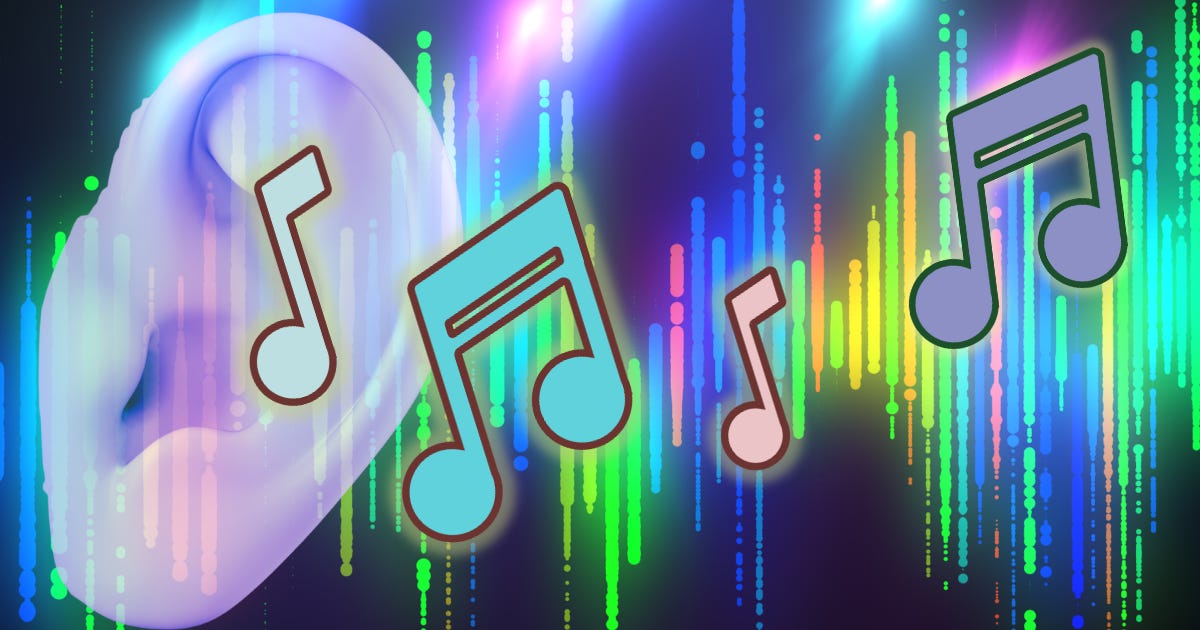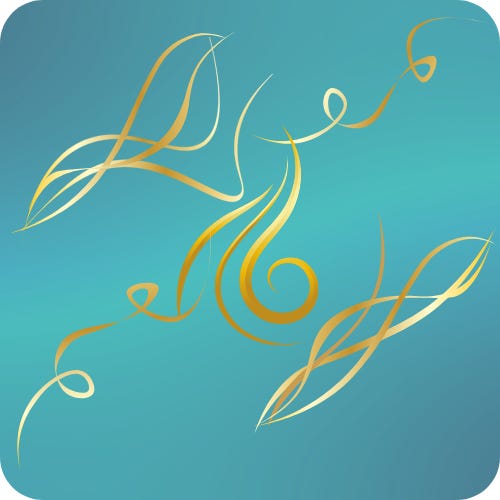When Color Speaks: Sensing Beyond the Senses
Crafting the Whale’s Tongue Series – Essay Two
“Doc, did you hear those colors?”
Those were the words, verbatim, I asked the anesthesiologist as he accompanied me to the recovery room.
I was waking fast, and his chagrin did not escape me, as if he anticipated my next words … “No wonder people get high with this stuff.”
His cringe was more real when I named the drug, which I will not do here, lest I be irresponsible and encourage an impromptu ‘trip’.
The point is, under the influence of a necessarily short anesthetic—because I had no driver to take me home from a day-stay surgery—I gazed into the most surreal and brilliant colors I could not even begin to name, and I saw them—no, heard them—as music, a hybrid blue jazz.
I have never used hallucinogens recreationally, but I must confess, from a scientific standpoint, there is a wee bit of experiential desire. I suppose a conversation with Jimi Hendrix or John C. Lilly may have sufficed.
From those seconds prior to awakening from anesthesia, I think I experienced what some synesthetes must experience daily. But can we really know?
When Senses Collide
I have mentioned synesthesia before (e.g., Phaiku No. 7), but let’s give it voice here and now:
Hearing colors
Tasting sounds
Numbers becoming words or letters
“It’s a rare condition …” It’s a condition of sensing things differently than a non-synesthete. And by ‘condition’, I do not mean to imply malady or disorder. It’s a difference, a neurodivergence from what is considered ‘typical’. (And I hope ‘typical’ will never become troped like the word ‘normal’).
Condition ≠ malady or disorder
Synesthesia = neurological phenomenon
The author of Lolita, Vladimir Nabokov, experienced grapheme-color synesthesia, where letters and numbers are associated with inherent colors.
Virginia Woolf, if you’re not afraid, was thought to be synesthetic by virtue of how she wrote. Although this is speculation, she blended senses in her descriptions so seamlessly that some suggest her writing expressed her sensory world.
Nabokov more clearly acknowledged his synesthesia. In his autobiography, he described, “The long a of the English alphabet … has for me the tint of weathered wood, but a French a evokes polished ebony.”
There are more than 60 known forms of synesthesia. Some of the more familiar include:
Grapheme-color synesthesia: letters and numbers are associated with colors.
Auditory-color synesthesia: sounds evoke colors.
Number-form synesthesia: numbers appear as shapes or spatial arrangements.
Taste-color synesthesia: tastes are associated with colors.
Ordinal sequence synesthesia: days of the week, months of the year, or other sequences appear in specific colors or shapes.
While synesthesia is said to be rare, some reports suggest it is found in 1 of every 200 people. Is that rare?
Some theories suggest that all infants may have synesthetic connections, which are later pruned back during development. For synesthetes, this pruning process may not be complete. Personally—although I only play a neuroscientist in Hollywood (not)—this theory warrants serious consideration. Innocence is not the only thing we grow out of.
Learning to Notice the Unseen
A reader, Apis Dea, commented on the first essay of this series, Why Invent a Language?, and asked: “How might a neurotypical realize [synesthesia] is important to understanding alien communication?”
Excellent question. How might we learn to notice what we cannot sense directly?
In the Whale’s Song series, we briefly examined how SETI and CETI are using AI to recognize and catalogue patterns in sperm whale clicks and various whoops and thumps heard from humpback whales. It’s not far-fetched, then, to imagine AI helping us interpret cross-sensory communication.
“AI synesthesia” is an emerging field: in 2019, researchers trained an AI to translate handwritten letters into colors based on grapheme-color synesthetes’ reported. Extrapolate forward, and perhaps one day AI could help us perceive an alien species’ cross-modal language—the bioluminescent pulsing of colors as meaning, for instance.
But AI isn’t the only option. Perhaps we can train ourselves—through meditation, art, or embodied practice—to live more fully into sensory overlap. Several studies suggest meditation can increase sensory interconnectedness and create experiences similar to synesthesia. No drugs required.
Here’s a small experiment: close your eyes and listen to a piece of music. Notice what colors or shapes arise. Then try sketching or painting them. It’s not true synesthesia, but it’s an exercise in stretching perception.
So how can a neurotypical understand synesthetes—and by extension, alien communication? Open your mind. Trust those with sensory wiring different from your own. They may be the truest listeners among us.
Listening Differently
Perhaps what sets Jayla apart as a xenolinguist is not intellect alone, but her willingness to listen differently—to imagine a word as a pulse of light or the taste of salt on the tongue. Red, her younger self, is desperate for connection; without that hunger, Jayla might never learn to crack the code. And in truth, neither might we.
In World Beyond the Song, a xenolinguist and an AI must work together to decipher the sensory-channeled communication of an alien species if they want to make first contact—and if they want to survive.
This is not just fiction-promotion. It is my own reminder, and maybe yours: to communicate. To connect. Before it’s too late.
Are We Ready to Listen?
If alien language is multimodal, are we ready to listen?
Maybe inventing Threlraan is less about aliens than it is about us—training ourselves to see sound, to taste silence, to notice what we’ve ignored. Whales, birds, wind, even stillness: they have been speaking all along. The question is whether we are willing to listen with more than ears.
A Final Whisper
Maybe the first word we recognize won’t be heard at all—maybe it will be seen, or felt, or remembered in silence.
How do you imagine language beyond words? Have you ever experienced a moment—music, color, stillness—that felt like it was speaking directly to you?
References
Cytowic, R. E. (2002). Synesthesia: A union of the senses (2nd ed.). MIT Press.
Eagleman, D. M. (2009). The objectification of overlearned sequences: A new view of spatial sequence synesthesia. Cortex, 45(10), 1266–1277. https://doi.org/10.1016/j.cortex.2009.06.012
Nabokov, V. (1951). Speak, Memory: An Autobiography Revisited. Putnam.
Ramachandran, V. S., & Hubbard, E. M. (2001). Synaesthesia—A window into perception, thought and language. Journal of Consciousness Studies, 8(12), 3–34.
Serrano, S., Millar, C. J., & Simner, J. (2019). Artificial synaesthesia through machine learning: Learning to see colours like grapheme-colour synaesthetes. Consciousness and Cognition, 75, 102816. https://doi.org/10.1016/j.concog.2019.102816
SETI Institute. (n.d.). Communication with extraterrestrial intelligence (CETI). Retrieved August 31, 2025, from https://www.seti.org
Woolf, V. (1925). Mrs Dalloway. Hogarth Press.






This is so fascinating. I have a daughter that does not see color auras around people; however, she will say, "so and so is purple today" (or any other color).